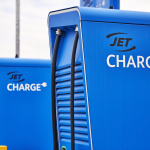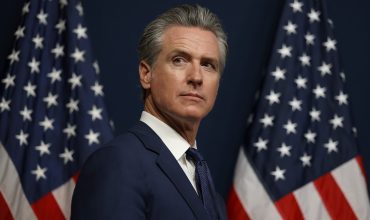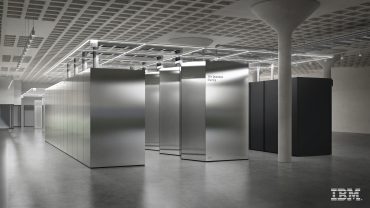

Global battery storage deployment accelerates as Samsung partners with Tesla for major Australian grid project
Key Takeaways
- Samsung chooses Tesla over in-house batteries for 100MW/400MWh Mangoplah project in New South Wales, marking strategic shift to leverage proven Megapack technology
- 2.82GW battery pipeline accelerates as Samsung C&T advances six standalone battery projects alongside five solar farms totaling 1.28GW across Australia
- Tesla storage deployments surge 125% to 14.7GWh in 2023 with $2.1 billion in signed contracts, highlighting explosive growth in battery energy storage market
Introduction
Samsung makes a strategic pivot in Australia’s energy storage market by selecting Tesla battery technology over its own for a major grid-scale project. The South Korean industrial giant announces plans for the 100MW/400MWh Mangoplah battery storage facility near Wagga Wagga, New South Wales, utilizing 108 Tesla Megapacks instead of Samsung SDI batteries.
This decision signals Samsung’s pragmatic approach to scaling its presence in the rapidly expanding energy storage sector. The move demonstrates how established technology companies prioritize market execution over internal technology preferences when pursuing large-scale renewable energy projects.
Key Developments
Samsung C&T Renewable Energy Australia submits federal EPBC Act applications for the Mangoplah project, located approximately 3km from the town and 30km from Wagga Wagga’s regional center. The 10.4-hectare site encompasses cropland, grasslands, and woodlands with historic mining interests but no active licenses.
Construction planning targets a 2027 start date with operations beginning in 2028 or 2029. The project requires accommodation for 60 workers during the 12-18 month construction period, prompting local council requests for community energy allocation to enhance public support.
Samsung C&T has explored the Mangoplah project since 2023 but remains in early planning stages with environmental impact assessments underway. The facility joins other renewable developments in the region, including Gregadoo, Livingstone, and Bomen solar farms alongside the proposed Belhaven battery storage system.
Market Impact
The collaboration positions Samsung at the intersection of leading battery technology providers in Australia’s competitive energy storage market. Tesla’s Megapack technology has established performance benchmarks through high-profile deployments, offering grid stabilization within milliseconds and replacing fossil-fuel peaker plants.
Samsung C&T currently advances an aggressive expansion pipeline including five solar farms totaling 1.28GW with integrated battery systems across New South Wales and Queensland. The company simultaneously develops six standalone battery projects representing 2.82GW of storage capacity.
Tesla’s energy storage business demonstrates the sector’s explosive growth trajectory with 14.7GWh deployed in 2023, representing 125% year-over-year increases. The company secured 26GWh of signed contracts valued at over $2.1 billion, reflecting strong market demand for utility-scale storage solutions.
Strategic Insights
Samsung’s decision to partner with Tesla rather than rely exclusively on Samsung SDI batteries reveals the complexity of scaling energy storage deployments. The collaboration provides Samsung access to Tesla’s established supply chain, advanced battery management systems, and proven project track record.
This partnership strategy helps Samsung accelerate its learning curve and close deployment gaps compared to Chinese battery giants CATL and BYD. The approach reflects industry recognition that energy storage markets are too large and complex for single-company domination.
Large-scale battery projects unlock multiple revenue streams including capacity services for grid operators, deferred infrastructure investments for utilities, and commercial storage applications. Declining battery costs driven by manufacturing scale improvements enhance project financial viability across market segments.
Expert Opinions and Data
Industry data from Renew Economy indicates Samsung’s substantial commitment to Australian energy storage markets through its diversified project portfolio. The Renew Map database tracks Samsung C&T’s pipeline alongside other major developers pursuing grid-scale storage deployments.
The global battery energy storage market maintains robust compound annual growth rates projected through 2033, driven by transport electrification and power system decarbonization. Tesla’s Megapack technology earns recognition as a “power plant in a box” capable of rapid grid response and fossil fuel replacement.
Samsung C&T also participates in the 1000MW Western Giga Energy hydrogen project proposed for Geraldton, Western Australia, demonstrating broader renewable energy ambitions. The company’s diverse technology partnerships position it for multiple energy transition opportunities across the region.
Conclusion
Samsung’s strategic collaboration with Tesla for the Mangoplah project exemplifies the accelerating convergence among industry leaders addressing surging energy storage demand. The partnership approach reflects practical recognition that cross-company alliances enable faster market scaling than proprietary technology development alone.
This collaboration positions both companies to capitalize on Australia’s expanding renewable energy infrastructure while grid modernization and electrification create sustained demand for utility-scale storage solutions. The project represents Samsung’s commitment to pragmatic technology choices that prioritize market execution over internal technology preferences.








